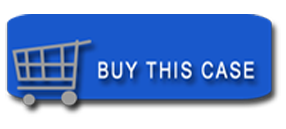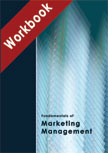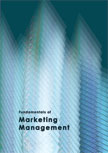Snapple's Marketing - An Unconventional Brand's Claim to Fame
|
|
ICMR HOME | Case Studies Collection
Case Details:
Case Code : MKTG148
Case Length : 23 Pages
Period : 1972-2006
Organization : Snapple Beverage Corporation, Quaker Oats, Triarc Group of
Companies, Cadbury Schweppes Plc.
Pub Date : 2006
Teaching Note : Available
Countries : USA
Industry : FMCG
To download Snapple's Marketing - An Unconventional Brand's Claim to Fame case study
(Case Code: MKTG148) click on the button below, and select the case from the list of available cases:

Price:
For delivery in electronic format: Rs. 400;
For delivery through courier (within India): Rs. 400 + Shipping & Handling Charges extra
» Marketing Case Studies
» Marketing Management Short Case Studies
» Case Studies Collection
» ICMR HOME
» Marketing Management Short Case Studies
» View Detailed Pricing Info
» How To Order This Case
» Business Case Studies
» Area Specific Case Studies
» Industry Wise Case Studies
» Company Wise Case Studies
Please note:
This case study was compiled from published sources, and is intended to be used as a basis for class discussion. It is not intended to illustrate either effective or ineffective handling of a management situation. Nor is it a primary information source.
Chat with us

Please leave your feedback

|
|




<< Previous
Background
In 1972, childhood friends Leonard Marsh, Hyman Golden, and
Arnold Greenberg, set up a company that they named Unadulterated Food Products
Inc. (UAF) to sell pure fruit juices in the New York area.
|
They launched a range of juices, with names like Passion Supreme, Vitamin
Supreme, Apple Crisp, and Cranberry Royale. In 1978, they paid $500 to a Texas
company for the name "Snapple". The name was given to their carbonated apple
drink which, however, did not do well in the market. The name was later extended
to all their beverage products, and eventually, the name of the company itself
was changed to Snapple Beverage Corporation (SBC).
In the late 1970s, there were many companies that manufactured and sold juices
and health drinks, but Snapple stood out from the rest because of its
unconventional marketing and distribution strategies.
|

|
From the beginning, the brand had differentiated itself from other beverages
with its 'amateurish'approach to marketing. By 1982, UAF added many more
varieties of juices to its product portfolio in the non-carbonated drinks
segment, which had remained untapped until then. By 1986, UAF had started
distributing juices and health drinks through health stores. In 1987, the
company launched Snapple iced teas, which became an instant success as the
ready-to-drink8 tea segment was also a fledgling
segment till then.
|
|
In 1994,
Quaker purchased Snapple for $1.7 billion9,
in a major move to strengthen its beverage portfolio, which at that time
consisted only of the leading sports drink Gatorade.10
By then, Snapple's sales had risen to $700 million.11
However, according to analysts, the acquisition turned out to be one of
the greatest debacles in the history of corporate mergers and
acquisitions.
They said that the takeover was mistimed as Snapple's sales growth had
just begun to slow down in the tea category after PepsiCo Inc. (Pepsi)12
and the Coca-Cola Company (Coca-Cola)13 had
launched their tea products in the early nineties.14 |
Excerpts >>
|
|









